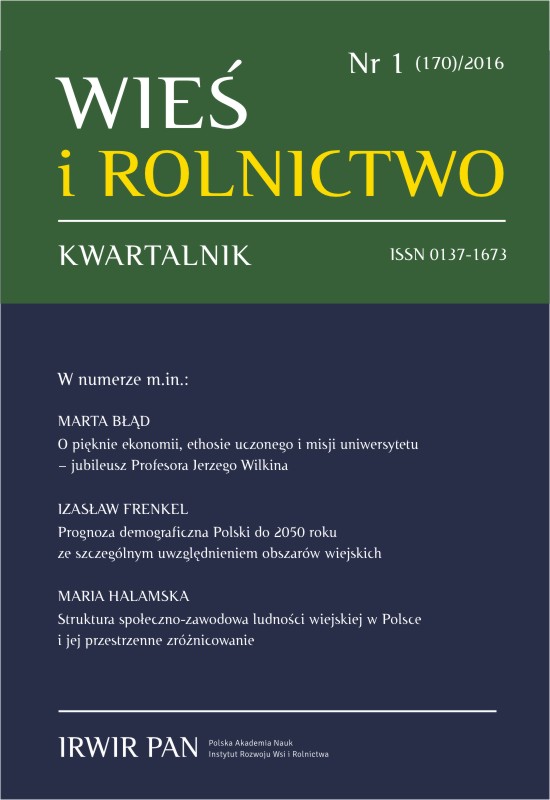Zróżnicowanie produktywności modeli gospodarstw rolnych w UE
PRODUCTIVITY DIVERSIFICATION BY FARM CATEGORY IN THE EUROPEAN UNION
Author(s): Arkadiusz Sadowski, Walenty Poczta, Patrycja Beba, Ewelina Szuba-BarańskaSubject(s): Social Sciences, Sociology, Rural and urban sociology
Published by: Instytut Rozwoju Wsi i Rolnictwa Polskiej Akademii Nauk
Keywords: agriculture; farm categories; the European Union; productivity of land and labour
Summary/Abstract: The aim of the article was to define economic efficiency and productivity of soiland labor in the family farms, small scale farms and large scale farms in the European UnionMember States. Farm categorization was based on the two main criteria such as structureof family labour force in relation to total labour and on the relation of agriculture incometo minimum wage. A farm was regarded as a family farm if the work input made by thefamily living on a farm exceeded 50% of the total work input calculated as AWU, and incomegenerated per 1 person exceeded the minimum wage. Farms featuring a predominanceof hired labour over family labour were considered large scale farms. Other farms wereclassified as small scale farms.Results of the analysis of the different types of farms depended directly on their category.In large scale farms labour efficiency is typically several times greater than in small scalefarms and in family farms. In many countries large scale farms also feature higher soilproductivity.According to the analysis, economic efficiency as well as soil and labour productivitywere the highest in the Benelux, followed by Germany, Denmark and Sweden. The worstresults in the EU were recorded by farms in Romania, Bulgaria and Lithuania.
Journal: Wieś i Rolnictwo
- Issue Year: 170/2016
- Issue No: 1
- Page Range: 127-138
- Page Count: 12
- Language: Polish

